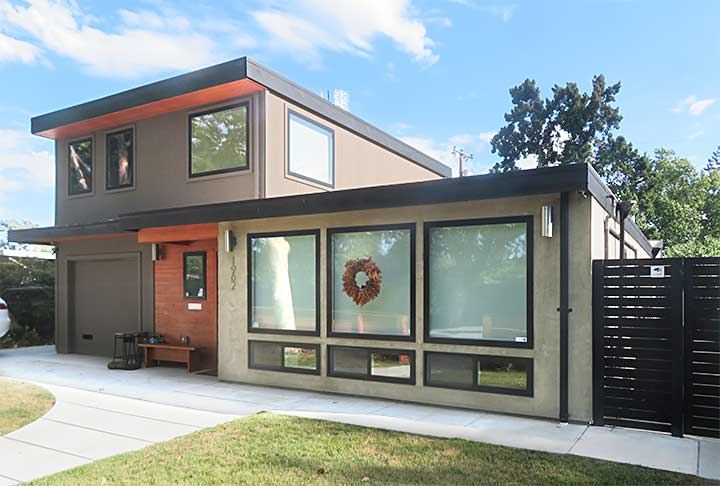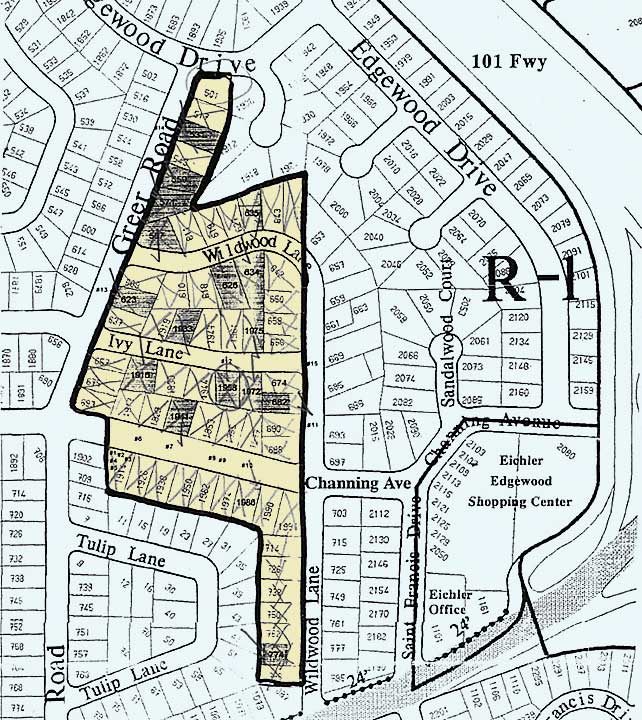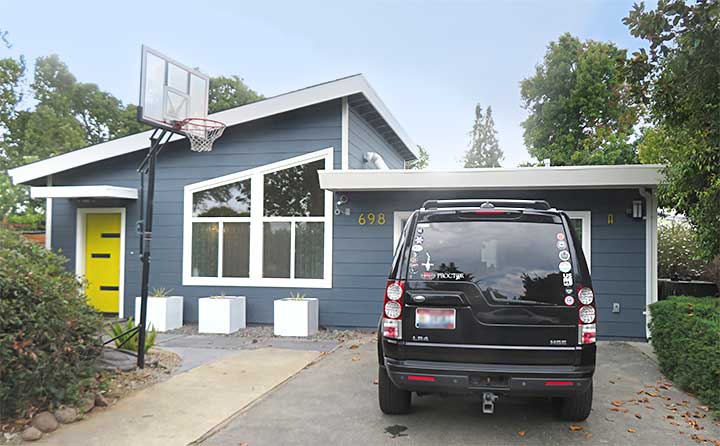
Eichlers Altered Despite Historic Listing
 |
To preservationists, it’s the gold standard. Nothing confers greater honor on a building or neighborhood than to be listed on the National Register of Historic Places. But does such a listing actually preserve anything?
A visit to the Palo Alto neighborhood of Green Gables suggests that the answer is no.
Joe Eichler built the original 63 homes of Green Gables in 1950, early in his career, to the designs of the first architectural team he worked with, Anshen and Allen.
The models include the AA-1, a compact home of about 1,100 square feet with an open plan, post-and-beam structure, and redwood-framed glass walls opening to the backyard. Green Gables put Eichler on the map, winning 'subdivision of the year' award from Architectural Forum magazine.
Back in 2005 Green Gables was one of the first two Eichler tracts to be named to the National Register of Historic Places, along with Greenmeadow, another tract in Palo Alto.
 |
At that time, the volunteers from the Eichler Historic Quest Committee who put together both Register nominations determined that of the 63 homes, 46 of them still had enough of their original looks to 'contribute' to a historic district.
But a recent visit to the neighborhood shows that at least five homes that were 'contributors' in 2005 would not contribute today. Some no longer look like Eichlers at all. On top of these five, a couple of others have been so modified that it’s unclear if they would contribute.
Overall, the original portion of Green Gables (another section was built later) still retains enough historic character to qualify for the Register. Although many homes have been enlarged, most still retain their looks.
It is a cozy neighborhood with much social activity. Green Gables does not have a homeowners’ organization and no one enforces architectural standards for remodels.
Over the years, standards for how a home 'contributes' have grown more forgiving than the rigorous standards used by the Historic Quest Committee. For example, some homes in the Fairglen area of San Jose, an Eichler tract that was added to the National Register several years ago, contributed even though they had second stories. Anything with a second story was automatically ruled out by the Historic Quest volunteers.
 Many homes within the pleasant tract of Green Gables do retain their historic looks, including this home on Greer Road. |
Jay Correia, a state historian who oversees the nomination process, has said that what is important is the overall historical feeling of the neighborhood.
Here are the changes that have occurred since 2005:
A home in the 1900 block of Channing Avenue, which the Quest group dinged for having an “exterior light added,” but included as a contributor, now is not an Eichler at all, but rather a two-story, boxy modern thing. This is a recent change.
On the 600 block of Greer Road, a home that in 2004, when the survey occurred, had a “changed garage door” but contributed nonetheless, today bears no resemblance to an Eichler. It is topped by shed-styled roofs that suggest butterfly wings.
On Wildwood Lane, in the 600 block, a home that in 2004 had “overall good integrity,” has since lost most of it thanks to an attic pop-up and large front-façade windows in an addition.
 |
Further down on that block of Wildwood, a home that in 2004 showed “overall good integrity” has been completely redone in a manner that plays up the modern look in a whimsical manner.
On the 700 block of Wildwood, a home that in 2004 suffered merely from “changed siding,” today has gained in height and has unusual windows.
It is known among preservationists that being listed on the National Register will not, in itself, protect a building or a neighborhood from inappropriate remodeling or even demolition. The National Register is part of the National Park Service, but park rangers don’t revisit neighborhoods to check on contractors at work.
Rather, being on the Register signals to local planning authorities that the property in question is historically significant, and thus may be worth protecting.
Amy French, Palo Alto’s chief planning official, explained in an interview that under the city’s rules, planners have “no discretion. We don’t do anything,” to preserve the historic look of a building if the planned remodel “meets the zoning and building codes.”
 |
If a variance from those codes is required for the remodel, for lot coverage or other reasons, then, she says, individual staff review would look at the project, and planners could say, ‘That’s not compatible with Eichler guidelines,’” she said.
French was involved in the development of the design guidelines for Eichlers, an attempt to steer owners to proper remodeling. She has a deep interest in historic preservation and in Eichlers, and helped lead an Eichler tour of Greenmeadow some years back.
But if no variance is required, French says, then “although it is a National Register district, there are no restrictions on what people can do.”
Disappointed in the National Register? Then consider other ways to preserve your modern neighborhood from inappropriate changes. Local historic districts are one possibility, and such zoning ploys as bans of second-story additions.
Many modern neighborhoods have banded together in these ways. Yours could too.
- ‹ previous
- 204 of 677
- next ›



